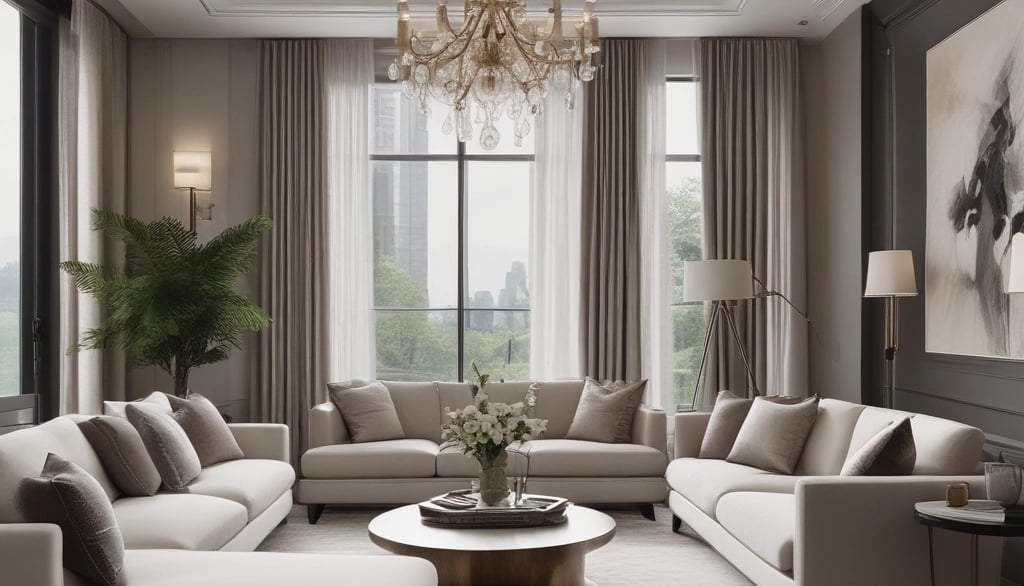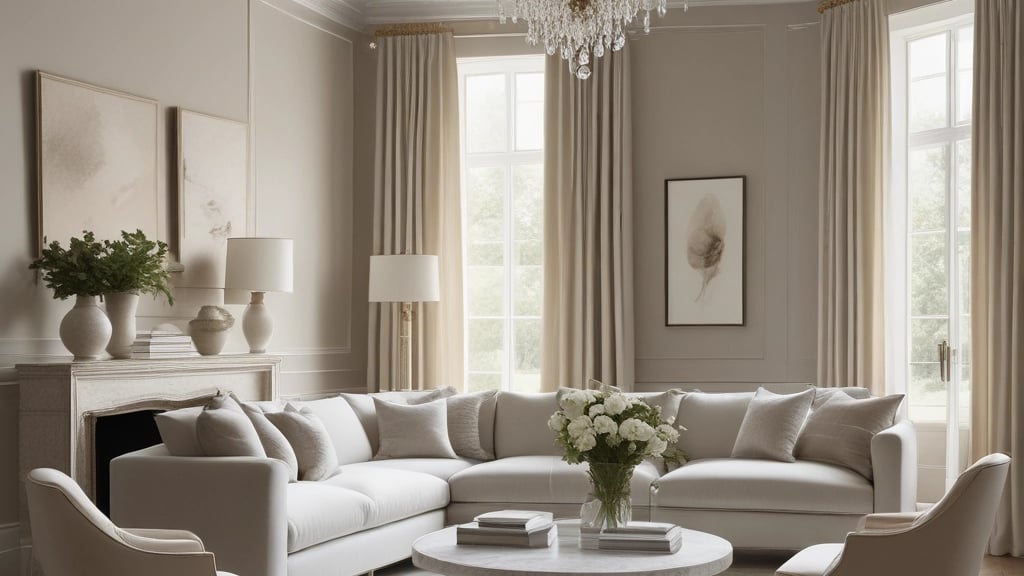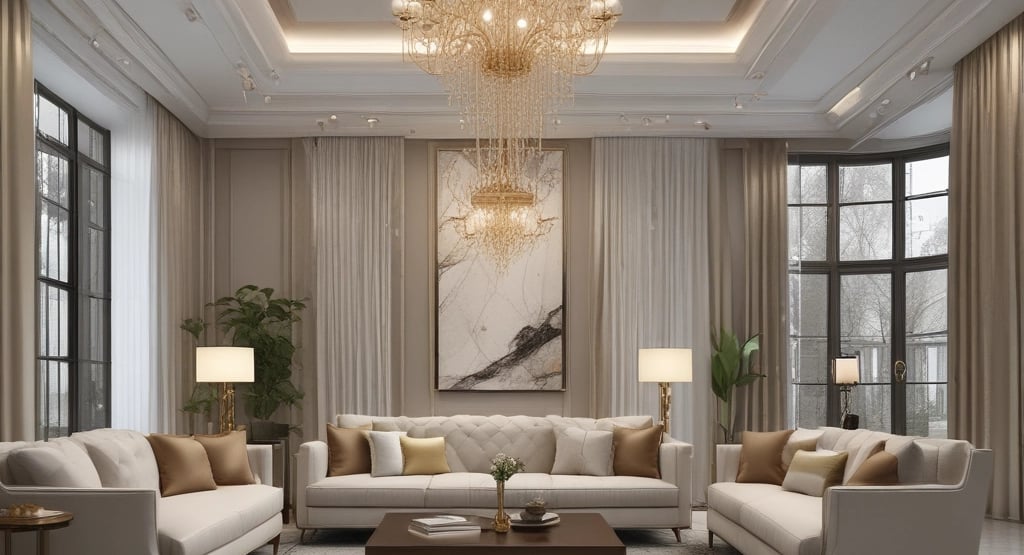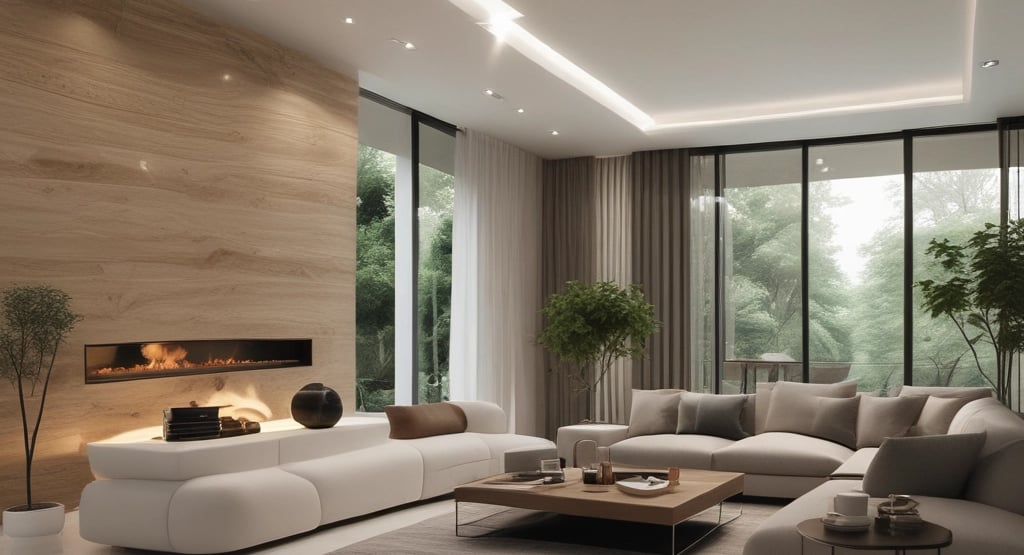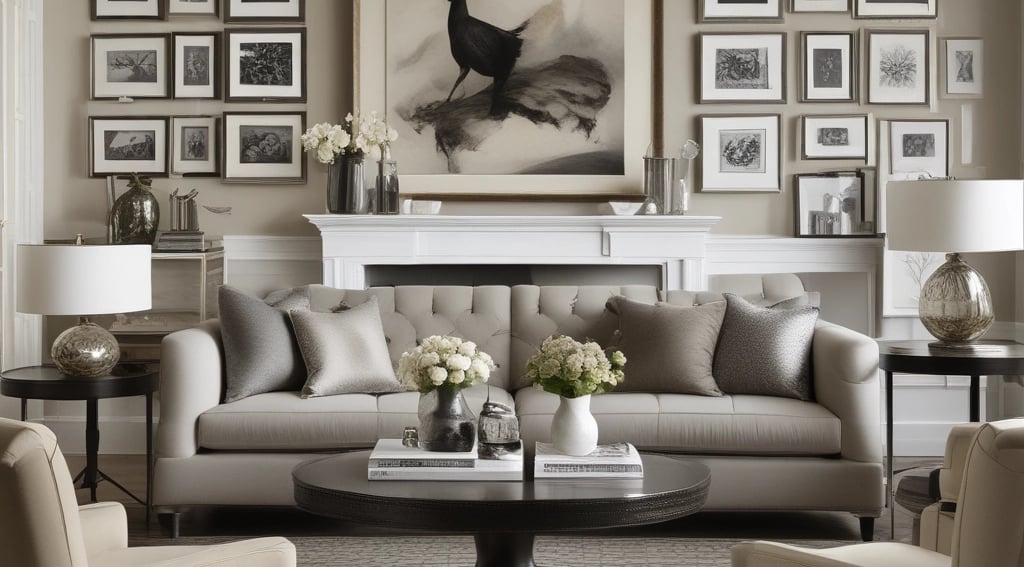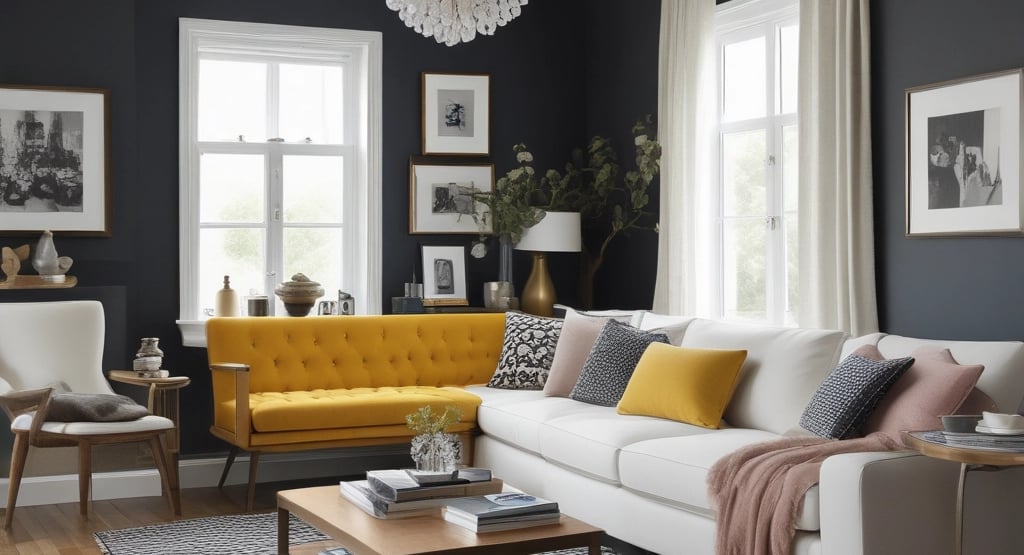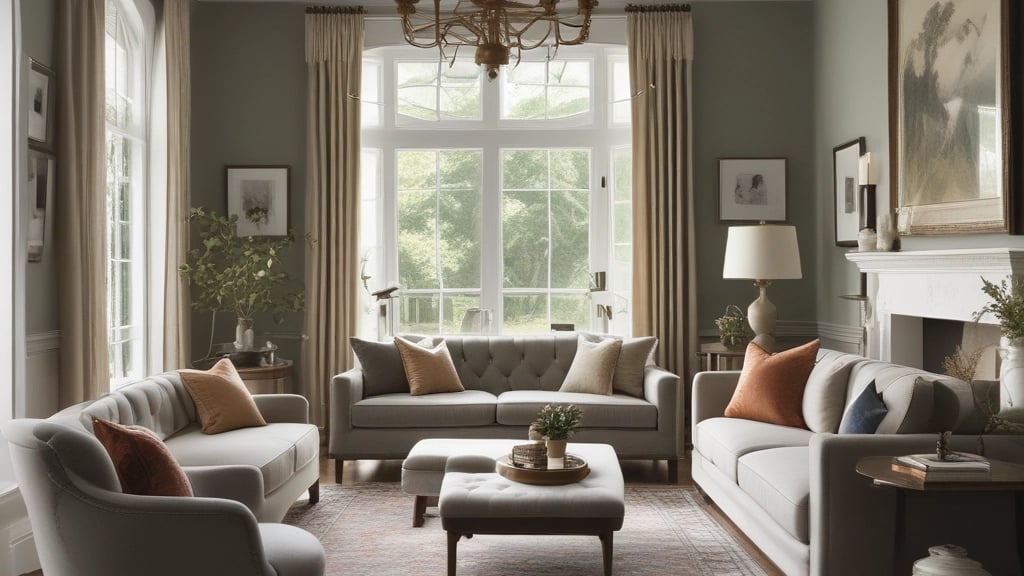Timeless Interior Design Ideas: Creating Spaces that Endure
HOME DESIGN IDEAS
Mohamed Amine
10/30/202516 min read
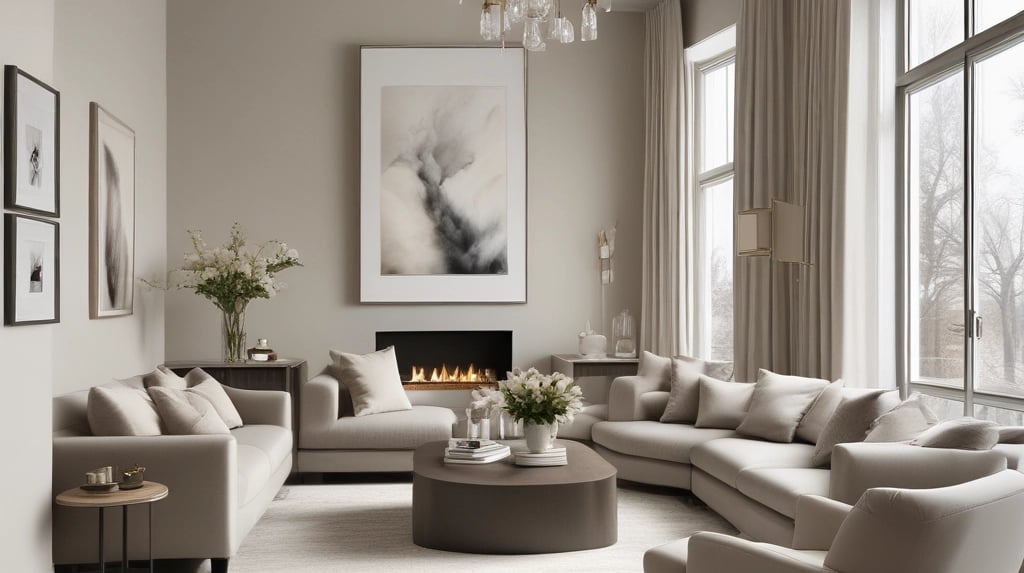

Introduction to Timeless Interior Design Ideas
Timeless interior design embodies a philosophy that prioritizes enduring aesthetics over fleeting trends, focusing on elements that stand the test of time. In a world where design trends can shift unexpectedly, often dictated by social media and fast fashion influences, the appeal of a space that retains its charm and functionality remains ever relevant. The essence of timeless design lies in its ability to create an inviting environment that feels as fresh today as it will in the years to come.
Significantly, timeless interior design is not simply about avoiding current trends; rather, it acknowledges the value of classic elements, quality materials, and thoughtful architecture. This approach encourages the selection of furniture, colors, and decorative pieces that not only resonate with personal style but also offer versatility and longevity. By incorporating these principles, homeowners and designers alike can foster spaces that transcend time, ensuring that a room remains appealing even as trends evolve.
The significance of timelessness extends beyond mere aesthetics. It can contribute to a sense of comfort and belonging, as spaces designed with timeless principles often evoke warm memories and a serene ambiance. By focusing on functionality alongside beauty, timeless design can align with sustainable practices, encouraging the use of durable materials and craftsmanship that reduce the need for frequent renovations.
As we delve deeper into various aspects of timeless interior design in this blog post, we will explore essential elements, including color palettes, furniture selections, and decorative accents that exemplify this enduring style. Ultimately, the goal is to inspire readers to create spaces that reflect their individuality while embracing the lasting allure of timeless design.
The Principles Behind Timeless Interior Design Ideas
Timeless interior design transcends trends, ensuring spaces remain aesthetically pleasing and functional over time. Central to achieving this enduring appeal are several key principles: balance, harmony, and proportion. Each of these concepts plays a pivotal role in crafting environments that exude sophistication while meeting practical needs.
Balance is the first principle of timeless design. It refers to the distribution of visual weight in a space, which can be symmetrical or asymmetrical. Symmetrical balance fosters a sense of order and formality, often seen in traditional designs, while asymmetrical balance introduces a more dynamic and casual feel. Both approaches contribute to a pleasing aesthetic, allowing the space to feel cohesive and well-organized, essential for creating an inviting atmosphere that endures.
Complementing balance, harmony in design relates to the way different elements work together within a space. This principle emphasizes the importance of using colors, materials, and textures that resonate with one another, forming a unified look. By incorporating a consistent color palette or thematic elements throughout the design, harmony is achieved, resulting in spaces that evoke calmness and stability. This unity is fundamental in timeless interior design, as it prevents the space from feeling cluttered or dated.
Lastly, the principle of proportion focuses on the relationship between elements in a room, ensuring that they fit together harmoniously in terms of size and scale. Proper proportion aids in avoiding overcrowding and ensures that each piece of furniture, decor, or architectural feature plays a vital role in the overall design. When elements are proportionate, the space feels balanced and functional, encouraging longevity in visual appeal.
By adhering to these principles, designers can create interiors that not only capture attention but also maintain their charm over time. Emphasizing balance, harmony, and proportion leads to beautiful designs that serve both aesthetic and practical purposes, ensuring enduring spaces that resonate with occupants for years to come.
Choosing a Neutral and Classic Color Palette
In the realm of timeless interior design, selecting a neutral and classic color palette plays a crucial role in establishing an enduring aesthetic. Neutral colors, such as whites, grays, beiges, and taupes, serve as a versatile foundation, allowing for a variety of decor styles to flourish while maintaining cohesion. These shades tend to evoke a sense of calmness and serenity, influencing the overall ambiance of a space. Moreover, studies in color psychology suggest that neutral tones can enhance focus and promote relaxation, making them ideal choices for residential and commercial environments alike.
When incorporating a neutral color palette, it is essential to consider the interplay of different shades and how they impact the perception of space. Lighter shades can create an illusion of openness, while deeper neutrals can add warmth and intimacy. For instance, incorporating soft whites with subtle gray undertones can make a room feel airy and bright, whereas a rich taupe can evoke sophistication and comfort. The selection of complementary colors adds depth, allowing for visual interest without overwhelming the senses.
Implementing a neutral and classic color palette also provides a significant advantage in terms of flexibility. Such a foundation allows homeowners to easily adapt their decor over time without necessitating a complete overhaul. Accents and accessories can be updated to reflect changing trends or personal taste, all while maintaining a cohesive and stylish look. As fashion and design evolve, this adaptable approach ensures that spaces remain relevant and visually appealing for years to come. Ultimately, by selecting timeless neutrals and classic shades, one can create a harmonious environment that stands the test of time.
Quality Over Quantity: The Importance of Durable Materials
When it comes to interior design, the choice of materials plays a pivotal role in defining the aesthetic and functionality of a space. Investing in high-quality, durable materials not only enhances the longevity of your design but also reduces ongoing maintenance requirements, ultimately providing better value over time. Quality materials stand the test of time; they withstand daily wear and tear while retaining their beauty and utility, making them a worthwhile investment for any interior design project.
One of the primary benefits of selecting durable materials is their ability to enhance the overall aesthetic appeal of a space. For example, natural materials like wood and stone exude warmth and elegance, creating a timeless aura that synthetic alternatives often fail to replicate. Solid wood furniture, with its rich textures and unique grain patterns, delivers not just beauty but durability, making it a preferred choice for many homeowners. Similarly, stone surfaces, whether used in countertops or flooring, add a classic touch while requiring minimal upkeep, thereby ensuring their allure endures.
Textiles also play a significant role in interior design. Opting for high-quality fabrics such as wool, linen, or cotton blends can greatly improve the resilience of upholstery and drapery. These materials tend to resist fading and wear, providing a comfortable yet enduring addition to any room. When selecting textiles, look for those with tight weaves or blends designed for durability, which not only enhance the overall look but also contribute to long-lasting performance.
Ultimately, when planning your interior design, prioritize quality over quantity. By choosing durable materials for your home, you can create a space that is not only visually appealing but also well-equipped to endure the rigors of daily life, assuring that your investment stands the test of time.
Blending Traditional and Modern Elements
The integration of traditional and modern design elements is an art that can lead to captivating and timeless interiors. This design philosophy is not merely a juxtaposition of styles but a harmonious blend, allowing the distinctive aspects of each to complement one another. The benefits of this approach are manifold: it creates depth and interest while reflecting the personality of the inhabitants, resulting in spaces that tell a story.
One effective way to achieve this balance is through the careful selection of furniture. For instance, pairing a sleek, modern sofa with an ornate, antique coffee table can infuse a living room with character and warmth. This combination not only draws the eye but also invites conversation around the juxtaposition of eras. Moreover, traditional materials such as wood or stone can be incorporated in contemporary fittings, ensuring that the essence of both styles is preserved.
Art plays a crucial role in establishing synergy between traditional and modern elements. A contemporary abstract painting can provide a striking contrast against a classic Victorian-era mantlepiece, thereby highlighting the uniqueness of each. Moreover, using textiles that combine both styles, like a modern geometric-patterned throw on a traditional quilted armchair, can also bring an inviting feel to the space.
To effectively blend these styles without compromising the integrity of either, it is essential to maintain a cohesive color palette. Utilizing neutral tones can help to fuse disparate elements, allowing the individuality of each piece to shine through without overwhelming the space. This mindful approach fosters a sense of unity, encouraging an ambiance that is both elegant and timeless. Ultimately, the goal is to create interiors that resonate with authenticity while celebrating the beauty found in both tradition and modernity.
The Role of Lighting in Timeless Interior Design
Lighting serves as a vital element in the realm of interior design, significantly influencing the ambiance, functionality, and aesthetic appeal of a space. In timeless interior design ideas, lighting transcends mere illumination, acting as a crucial component that enhances the overall mood and character of an environment. Different types of lighting namely natural, ambient, task, and accent lighting play unique roles in achieving a cohesive design.
Natural lighting emanates from windows, skylights, and other openings, providing warmth and vitality. This form of lighting not only makes a room feel more spacious but also creates an inviting atmosphere. Designers often leverage natural light by strategically placing mirrors or using light-colored furnishings to reflect brightness. Additionally, maximizing natural light has the added benefit of promoting energy efficiency, aligning with sustainable design principles.
Ambient lighting, which serves as the primary source of illumination, is essential for ensuring that a space remains practical. This form can be achieved through overhead fixtures, chandeliers, or wall-mounted lights, providing even illumination across the room. Incorporating dimmers into ambient lighting can further enhance versatility, allowing occupants to adjust the brightness according to the occasion, gracefully transitioning between a relaxed mood and energetic activities.
Task lighting is vital for performing specific functions, such as reading, cooking, or working. This type includes desk lamps, under-cabinet lights, and adjustable sconces that direct light to specific areas. It is important to integrate task lighting seamlessly into designs, ensuring it complements the existing décor while fulfilling its practical purpose.
Lastly, accent lighting adds depth and visual interest, emphasizing artwork or architectural features. Wall-mounted fixtures, tabletop lamps, and spotlights can effectively draw attention to focal points in a room. When selecting timeless lighting fixtures, versatility, and elegance should be prioritized, opting for designs that withstand changing trends and complement various styles. By thoughtfully incorporating these lighting elements, one can significantly enhance the timeless quality of a space.
Incorporating Natural Elements for Timeless Appeal
In contemporary interior design, the thoughtful incorporation of natural elements serves not only as a means of enhancing aesthetics but also as a pathway to achieving a sense of tranquility and timelessness within a space. Elements such as plants, wood, and stone hold potential for transforming interiors by establishing a strong connection between indoor environments and the great outdoors.
The use of plants is one of the most effective ways to introduce nature into interior spaces. Indoor greenery not only adds color and texture but also promotes well-being by improving air quality and fostering a calming atmosphere. Selecting a variety of plants, from large leafy specimens to smaller succulents, allows for a layered, dynamic visual experience. Incorporating plants into different areas, such as hanging them from ceilings or displaying them on shelves, can create a lively environment that evokes natural beauty.
Wood is another timeless material that contributes warmth, depth, and texture to interior design. By utilizing reclaimed wood furnishings or accent walls, designers can achieve a rustic charm that resonates with sustainability. The use of natural finishes and stains on wood surfaces enhances their organic essence, fostering an inviting and serene atmosphere. Additionally, wooden elements can be seamlessly integrated into various design styles, from modern minimalism to traditional elegance, making them an essential component of timeless interiors.
Stone, in its many forms, introduces an element of permanence and stability to a space. Whether used in flooring, countertops, or accent walls, natural stone not only adds a touch of luxury but also speaks to a timeless aesthetic. Its durability ensures that these surfaces will uphold their beauty over time, contributing to an enduring design ethos.
By thoughtfully incorporating these natural elements, interior designers can create spaces that resonate with elegance and simplicity, fostering a sense of well-being and connecting inhabitants with their environment.
The Power of Minimalism in Timeless Interiors
Minimalism has emerged as a powerful design philosophy, celebrated for its fundamental principle of 'less is more.' This approach emphasizes the importance of simplicity, allowing one to create interiors that are both functional and aesthetically pleasing. Minimalist design focuses on essential elements, stripping away the superfluous to create a serene and uncluttered environment, which can be particularly beneficial in achieving a timeless appeal.
One of the primary benefits of adopting a minimalist approach is the creation of clutter-free spaces. Such environments promote tranquility, making them conducive to relaxation and productivity. With fewer distractions, individuals can enjoy a more focused and harmonious lifestyle. Moreover, minimalism encourages thoughtful selection of furniture and decor items that contribute to the overall design, ensuring that each element serves a purpose and reinforces the visual narrative of the space.
Implementing minimalism does not mean compromising on comfort or functionality. To strike the perfect balance, it is essential to choose high-quality, versatile pieces that can serve multiple functions. For example, a sleek sofa with built-in storage or a coffee table that can double as additional seating can maximize space utility while maintaining a clean aesthetic. Further, utilizing neutral color palettes and natural materials enhances the warmth of minimalistic interiors without overwhelming them.
Additionally, incorporating ample natural light can elevate minimalist spaces by creating an open and airy atmosphere. Large windows or strategically placed mirrors can reflect light, adding dimension while adhering to the minimalist ethos. Plants can also introduce a touch of nature, providing organic beauty and a sense of tranquility within the design.
By embracing the principles of minimalism, individuals can reimagine their living spaces into timeless interiors that reflect their personal style while fostering a sense of calm and order. A minimalist approach not only enhances the functionality of a home but also encourages a lifestyle that values simplicity, allowing inhabitants to focus on what truly matters.
Art, Accessories, and Personal Touches that Last
In the realm of timeless interior design, art and accessories play a pivotal role in shaping personal expression and creating enduring spaces. Thoughtfully selected pieces not only enhance the aesthetic quality of a room but also provide an avenue for individual storytelling. When curating art and décor for your home, it is essential to choose items that resonate with your personal style while harmonizing with the overall design theme.
One effective approach to achieving a timeless aesthetic is to focus on the emotional connection you have with specific artworks and accessories. Invest in pieces that evoke memories or reflect your personality, as they often stand the test of time. Instead of following fleeting trends, consider selecting classic styles and mediums, such as oil paintings, sculptures, or handcrafted items, which tend to retain their appeal over the years. The goal should be to create a well-curated collection that feels authentic and cohesive, reflecting your taste while ensuring longevity.
In addition to selecting standout items, arrangement and placement are crucial in ensuring your art and accessories contribute to a harmonious environment. Grouping artworks and decorative objects in a thoughtful manner can create a gallery-like atmosphere that feels both personal and inviting. Remember to consider scale and proportion; balancing larger pieces with smaller accessories ensures the visual flow remains intact. Using varied textures and finishes can also add depth and intrigue, encouraging engagement with the space.
Acknowledging that personal style can evolve, allow room for flexibility within your collection. This may include rotating or reimagining your decoration over time while keeping foundational elements constant. By implementing these strategies, you can foster an atmosphere that is uniquely yours one that endures through both changing trends and personal growth.
Sustainable Practices in Timeless Interior Design Ideas
In recent years, sustainability has emerged as a crucial element of timeless interior design. The integration of eco-friendly materials and energy-efficient solutions not only enhances the aesthetic appeal of a space but also promotes environmental responsibility. Incorporating sustainable practices into interior design transcends trends, establishing a foundation for enduring spaces that remain relevant over time.
One fundamental aspect of sustainable interior design is the selection of eco-friendly materials. Utilizing reclaimed wood, bamboo, and recycled metal offers both beauty and durability while minimizing the strain on natural resources. These materials not only reduce waste but also impart a unique character to spaces, embodying a story that often resonates with homeowners and visitors alike. Furthermore, opting for low-VOC (volatile organic compounds) paints, stains, and finishes contributes to healthier indoor air quality, ensuring that the aesthetics of a space do not come at the expense of well-being.
Energy-efficient solutions play a significant role in promoting sustainability in interior environments. The installation of LED lighting, energy-efficient appliances, and smart home systems enhances the functionality of a space while reducing energy consumption. These solutions not only offer long-term cost savings but also minimize the carbon footprint of a home. Moreover, incorporating natural light through strategic placement of windows and skylights enhances energy efficiency and creates an inviting atmosphere within the space.
Additionally, sustainable practices extend to furniture and decor choices. Investing in timeless pieces that are built to last rather than disposable trends supports a culture of resourcefulness and reduces waste. Moreover, choosing locally sourced items promotes sustainability through reduced transportation emissions, strengthening the local economy.
Incorporating these eco-conscious elements into timeless interior design not only elevates the aesthetic appeal of a space but also fosters a connection with nature, ensuring that beauty and responsibility coexist harmoniously. By embracing sustainability as a core component of design, homeowners can create spaces that are both visually stunning and environmentally considerate.
Avoiding Trends to Achieve Timelessness
In the world of interior design, it is easy to get swept up in the latest trends that promise to transform spaces overnight. However, these fleeting fads often lack durability and can result in an aesthetic that quickly feels outdated. To create interiors that resonate with timeless appeal, it is essential to navigate away from passing trends and instead focus on design elements that endure the test of time.
One key strategy is to prioritize classic styles and materials over transient trends. For instance, opting for natural materials such as wood, stone, and high-quality textiles can significantly enhance the longevity of a design. These materials not only age beautifully but also develop a character that reflects the history and lives of those who inhabit the space. Avoiding overly trendy colors and patterns is also crucial. While vibrant hues may be appealing in the moment, they can become tiresome as trends shift. Instead, consider a neutral color palette paired with timeless accent pieces that evoke a sense of serenity and sophistication.
Another effective approach is to invest in foundational elements that are less likely to fall out of favor. High-quality furnishings and classic architectural features can anchor a room's design, providing stability as the surrounding decor evolves. Furthermore, integrating personal artifacts and meaningful decor can enhance the uniqueness of a space without adhering to current trends. These items often transcend timelines and add depth to interiors.
Lastly, keep an eye on emerging trends, but practice discernment. Not every new design element warrants implementation. By identifying trends with a strong likelihood of becoming mainstays in the design community, one can selectively incorporate them into an enduring design scheme. Ultimately, by steering clear of temporary fads and committing to a cohesive vision, interiors can radiate a sense of timelessness that appeals across generations.
Creating Spaces that Age Gracefully
Designing interiors that develop character and charm over time requires a thoughtful approach to selecting materials, colors, and styles. The concept of timeless design is intrinsically linked to the idea of aging gracefully, where spaces acquire a unique appeal as they mature. By choosing elements that not only endure in terms of durability but also grow in attractiveness, homeowners can create environments that tell a story through the passage of time.
One effective way to achieve this is by opting for natural materials such as wood, stone, and metal. These materials possess an inherent quality that enhances over time; for instance, hardwood floors add warmth and richness as they acquire scratches and patina, reflecting the lives lived within the space. Similarly, natural stone countertops can develop a stunning visual history through everyday use, elevating the aesthetic of the kitchen or bathroom.
Colors play a pivotal role as well, with neutral palettes providing a flexible foundation that allows for adaptability as trends shift. By using calming, earthy tones, designers can create a serene backdrop that remains inviting regardless of changing fashions. The incorporation of textiles like woven rugs, linen curtains, or cotton upholstery can also contribute to a space's ability to age gracefully, as they offer texture and comfort while naturally softening with wear.
Furthermore, embracing vintage furnishings can introduce historical depth to a space. Antiques or second-hand items not only add uniqueness but also present a contrast to newer pieces, generating a well-curated aesthetic. This blend creates a sense of continuity, allowing modern elements to coexist harmoniously with time-honored designs. Ultimately, the goal is to foster an environment where the integrity of the interior design scheme encourages appreciation for the beauty that emerges with age.
Conclusion: The Enduring Power of Timeless Interior Design
Timeless interior design possesses a unique ability to transcend trends, proving that true beauty and functionality can withstand the test of time. In this discussion, we have explored several principles that elevate spaces to a level of enduring appeal. Key among these is the integration of classic elements with modern sensibilities, which creates a harmonious balance between the old and the new. By blending styles from different eras, one can establish a personalized environment that resonates with authenticity and character.
Furthermore, the importance of quality materials and craftsmanship cannot be overstated. Utilizing durable, high-quality materials ensures that spaces not only look exquisite but also stand up to daily wear and tear. When creating timeless interiors, selecting pieces that highlight craftsmanship transforms a space from merely functional to outstandingly elegant. This approach emphasizes the significance of surrounding oneself with elements that convey lasting values.
Additionally, one cannot overlook the impact of thoughtful layout and space planning in timeless interior design. A well-designed space takes into consideration how the area will be utilized and incorporates appropriate furnishings that enhance functionality while maintaining aesthetic appeal. This principle encourages fluidity and flexibility, allowing spaces to adapt to the needs of its inhabitants over time.
As we conclude this exploration of timeless interior design, it is essential to remember that designing enduring spaces should be a reflective journey. It is a process of thoughtfully choosing elements that not only resonate with personal style but also create a lasting impact. Encourage yourself to embrace these principles, allowing your spaces to evolve beautifully while enjoying the rewarding experience of curating timeless interiors that you will cherish for years to come.
References
Timeless by Design: Designing Rooms with Comfort, Grace, and History
Author: by Nina Farmer , Andrew Sessa Mitchell Owens
Link: Timeless by DesignAxel Vervoordt: Timeless Interiors
Author:by Armelle Baron , Christian Sarramon
Link: Axel Vervoordt: Timeless InteriorsTimeless Modern Interiors
Author:by Pilar Viladas, Lucien Rees-Roberts
Link: Timeless Modern InteriorsNew English Style: Timeless Interiors
Author: by Mary Graham , Nicole Salvesen , David Nicholls
Link: New English Style: Timeless InteriorsPatina Modern: A Guide to Designing Warm, Timeless Interiors
Author: by Chris Mitchell and Pilar Guzmán
Link: Patina ModernThe Finer Things: Timeless Furniture, Textiles, and Details
Author: by Christiane Lemieux , Miles Redd
Link: The Finer Things100 Cotswolds Interior Design Photography Book: Timeless Charm from England’s Countryside
Link: 100 Cotswolds Interior Design
